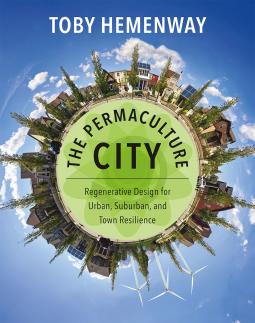A Whole-Systems Design Approach to City Living
DOI:
https://doi.org/10.5304/jafscd.2016.062.025
Keywords:
Permaculture, Planning, Systems ThinkingAbstract
First paragraphs:
Toby Hemenway's recent book is a well grounded follow-up to his earlier book, Gaia's Garden, which was instrumental in introducing the concept of permaculture to an American audience. Despite the fact that many books on permaculture have been published since its 2001 publication, Hemenway's earlier publication remains the best-selling permaculture book in the U.S.
It is not necessary to have a familiarity with permaculture prior to reading The Permaculture City, as the author has done a masterful job of explaining permaculture principles, design methods, and the steps of the design process. Permaculture is described as "a set of decision-making tools, based on natural systems, for arriving at regenerative solutions to design challenges of all kinds" (p. xii). Permaculture is concerned with the design of ecological human habitats and food production systems. It is a land-use and community-building design method that strives for the harmonious integration of human dwellings, microclimate, annual and perennial plants, animals, soils, and water into stable, productive communities. The focus is not on these elements themselves, but rather on the symbiotic relationships created among them by the way we place them in the landscape. This synergy is enhanced by mimicking patterns found in nature....
Metrics

Downloads
Published
How to Cite
Issue
Section
Categories
License
Copyright (c) 2016 Sharon Ferguson, Jillian Ferguson

This work is licensed under a Creative Commons Attribution 4.0 International License.
The copyright to all content published in JAFSCD belongs to the author(s). It is licensed as CC BY 4.0. This license determines how you may reprint, copy, distribute, or otherwise share JAFSCD content.













